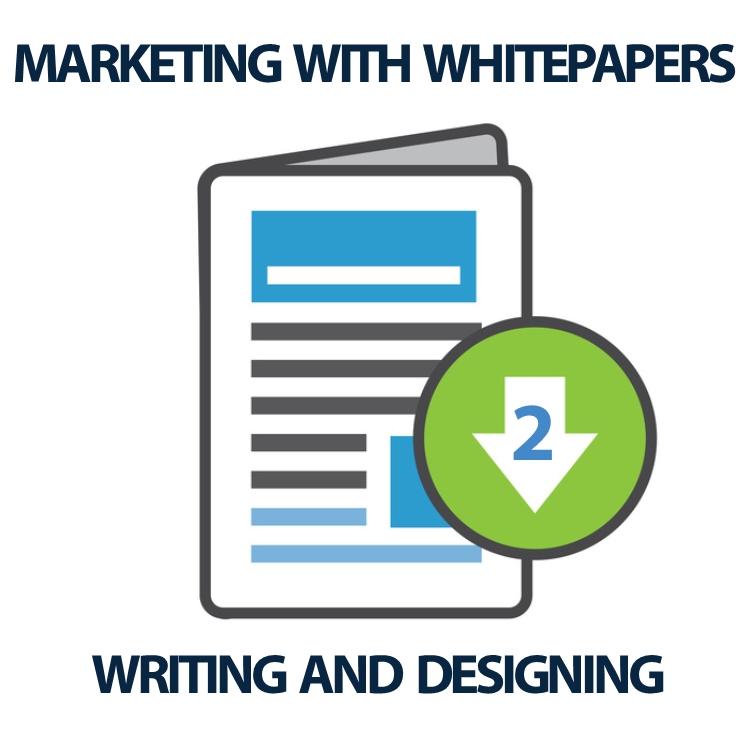JoomConnect Blog
Marketing with Whitepapers (2 of 3) - Writing and Designing
Our Marketing With Whitepapers blog series kicked off with part 1, which discussed what a whitepaper is and why you should consider utilizing them in your marketing efforts. Now, we will discuss everything that goes into actually creating a whitepaper, including the research, drafting, and design.
Writing and Designing A Whitepaper
Before you even start writing your whitepaper, you need to do extensive research on the subject matter you are covering. That topic should be of interest to your target audience, be expansive enough that you can write multiple pages on it, be a subject matter that you understand, and should relate back to one of your product and service offerings. Planning out the general layout of your whitepaper and outlining it before you start writing will help keep you focused on the central subject.
The Basic Structure
- Title Page: Your title page should capture the attention of the reader with a catchy title and an attractive, professional layout. If you have a lengthy whitepaper, you can consider adding a table of contents immediately following your title page.
- About Us: Briefly introduce yourself here so that if the reader doesn’t make it through the entire whitepaper, they are still introduced to your company. Provide at minimum: your company name and logo, a link to your website and social media pages, a phone number, and an email. You can also write a short couple sentences about the company and include your top and related service offerings as well.
- Introduction and/or Executive Summary: This should provide a general overview of everything you discuss in the whitepaper. Write this part after completing everything else so that it encompasses your whitepaper at its finished state rather than your initial plan.
- Problem or Definition: With problem-solution whitepapers, you should be discussing the problem you are addressing in detail. If your whitepaper instead is explaining the benefits of something (that ‘something’ being related to one of your service offerings), spend some time defining that ‘something’. Depending on what it is you’re covering, this might be delving into the history of your subject or explaining the different models or methods that exist today. In a product comparison whitepaper, you would present all old, inferior solutions here.
- Solution or Detailed Explanation: In problem-solution whitepapers, you would now offer a solution to the problem that you discussed that ties into your service offering. No matter what version of whitepaper you are writing, make sure that this section doesn’t sound too sales-focused - a plethora of sales language will turn people away. In a benefits whitepaper, you would now cover the various benefits of your solution in detail. In a product comparison whitepaper, you now present your preferred solution (AKA, what you do) in a way that showcases it as the better solution, but still allows the reader to come to that conclusion themselves.
- Call-to-Action: The last page of your whitepaper should include your company’s contact information, along with an applicable call-to-action that will direct them to a service that you provide that relates to your whitepaper.
Remember, a whitepaper often includes tables, charts, and graphs where and when applicable. These will most likely go in the Solution or Detailed Explanation section, and maybe the Problem or Definition section depending on what you are covering.
The Design
Once you have proofread everything and have made your revisions, make sure you dress up your whitepaper a bit so the reader isn’t faced with too many big blocks of text. Failing to do so pretty much ensures that the reader won’t made it to the end of your document.
Consider doing the following:
- Use bulleted or numbered lists instead of paragraphed text where applicable. Consider using SmartArt to better showcase listed items when there is only a few important pieces.
- Add color to headings, sub-headings, or other important text.
- Dress up any tables, graphs, charts, and diagrams.
- Pull out important quotes, statistics, or lines of text and put them over a colored shape to make them stand out.
- Add imagery throughout that matches what you are discussing.
Try to be consistent using the same fonts and styles throughout. When picking colors, use ones that go with your company’s branding. But, don’t plaster your logo throughout the entire document - only in your title page, about us, and call-to-action sections. Just like with the language you use when writing, you shouldn’t let your logo give off the impression that this deliverable is purely sales-focused.
Once you have your general design, you can use that same design as a template for future whitepapers.
What Now?
After you are done writing and designing your whitepaper, it’s time to post it on your website and start marketing it. We will discuss how to do this in the next and final part of this blog series.
For additional help writing and designing a whitepaper, you can turn to us! Our content team can create a whitepaper for you and brand it to your company. Contact us to learn more.




Comments